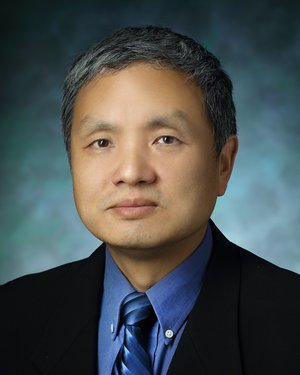Research Lab Results
-
O'Rourke Lab
The O’Rourke Lab uses an integrated approach to study the biophysics and physiology of cardiac cells in normal and diseased states. Research in our lab has incorporated mitochondrial energetics, Ca2+ dynamics, and electrophysiology to provide tools for studying how defective function of one component of the cell can lead to catastrophic effects on whole cell and whole organ function. By understanding the links between Ca2+, electrical excitability and energy production, we hope to understand the cellular basis of cardiac arrhythmias, ischemia-reperfusion injury, and sudden death. We use state-of-the-art techniques, including single-channel and whole-cell patch clamp, microfluorimetry, conventional and two-photon fluorescence imaging, and molecular biology to study the structure and function of single proteins to the intact muscle. Experimental results are compared with simulations of computational models in order to understand the findings in the context of the system as a whole. Ongoing studies in our lab are focused on identifying the specific molecular targets modified by oxidative or ischemic stress and how they affect mitochondrial and whole heart function. The motivation for all of the work is to understand • how the molecular details of the heart cell work together to maintain function and • how the synchronization of the parts can go wrong Rational strategies can then be devised to correct dysfunction during the progression of disease through a comprehensive understanding of basic mechanisms. Brian O’Rourke, PhD, is a professor in the Division of Cardiology and Vice Chair of Basic and Translational Research, Department of Medicine, at the Johns Hopkins University. -
Tom Woolf Lab
The Tom Woolf Lab studies the quarter of the genome devoted to membrane proteins. This rapidly growing branch of bioinformatics, which includes computational biophysics, represents the main research direction of our group. We aim to provide insight into critical issues for membrane systems. In pursuit of these goals, we use extensive computer calculations to build an understanding of the relations between microscopic motions and the world of experimental measurements. Our calculations use our own Beowulf computer cluster as well as national supercomputer centers. An especially strong focus has been on the computed motions of proteins and all-atom models of the lipid bilayers that mediate their influence. To compute these motions, we use the molecular dynamics program CHARMM. We hope to use our understanding of the molecular motions for the prediction of membrane protein structures using new computational methods. -
Ryuya Fukunaga Lab
The Fukunaga Lab uses multidisciplinary approaches to understand the cell biology, biogenesis and function of small silencing RNAs from the atomic to the organismal level. The lab studies how small silencing RNAs, including microRNAs (miRNAs), small interfering RNAs (siRNAs) and piwi-interacting RNAs (piRNAs), are produced and how they function. Mutations in the small RNA genes or in the genes involved in the RNA pathways cause many diseases, including cancers. We use a combination of biochemistry, biophysics, fly genetics, cell culture, X-ray crystallography and next-generation sequencing to answer fundamental biological questions and also potentially lead to therapeutic applications to human diseases.
-
George Rose Lab
The George Rose Lab investigates protein folding, the spontaneous disorder transition that takes place under physiological conditions. The protein polymer is flexible in its unfolded state but takes on a unique native, three-dimensional form when folded. We propose that the folded state is selected from a set number of structural possibilities, each corresponding to either a distinct hydrogen-bonded arrangement of ??helices or a strand of ??sheet.
-
Xiao Group
The objective of the Xiao Group's research is to study the dynamics of cellular processes as they occur in real time at the single-molecule and single-cell level. The depth and breadth of our research requires an interdisciplinary approach, combining biological, biochemical and biophysical methods to address compelling biological problems quantitatively. We currently are focused on dynamics of the E. coli cell division complex assembly and the molecular mechanism in gene regulation. -
Wolberger Lab
The Wolberger Lab is interested in the structural and mechanistic basis for transcriptional regulation and ubiquitin signaling as it relates to the integrity and expression of the genome. We use x-ray crystallography, enzymology, cell-based assays and a variety of biophysical tools to gain insights into the mechanisms underlying these essential cellular processes. -
Kechen Zhang Laboratory
The research in the Kecken Zhang Laboratory is focused on theoretical and computational neuroscience. We use mathematical analysis and computer simulations to study the nervous system at multiple levels, from realistic biophysical models to simplified neuronal networks. Several of our current research projects involve close collaborations with experimental neuroscience laboratories. -
Michael Caterina Lab
The Caterina lab is focused on dissecting mechanisms underlying acute and chronic pain sensation. We use a wide range of approaches, including mouse genetics, imaging, electrophysiology, behavior, cell culture, biochemistry and neuroanatomy to tease apart the molecular and cellular contributors to pathological pain sensation. A few of the current projects in the lab focus on defining the roles of specific subpopulations of neuronal and non-neuronal cells to pain sensation, defining the role of RNA binding proteins in the development and maintenance of neuropathic pain, and understanding how rare skin diseases known as palmoplantar keratodermas lead to severe pain in the hands and feet.
-
Stivers Lab
The Stivers Lab is broadly interested in the biology of the RNA base uracil when it is present in DNA. Our work involves structural and biophysical studies of uracil recognition by DNA repair enzymes, the central role of uracil in adapative and innate immunity, and the function of uracil in antifolate and fluoropyrimidine chemotherapy. We use a wide breadth of structural, chemical, genetic and biophysical approaches that provide a fundamental understanding of molecular function. Our long-range goal is to use this understanding to design novel small molecules that alter biological pathways within a cellular environment. One approach we are developing is the high-throughput synthesis and screening of small molecule libraries directed at important targets in cancer and HIV-1 pathogenesis. -
Svetlana Lutsenko Laboratory
The research in the Svetlana Lutsenko Laboratory is focused on the molecular mechanisms that regulate copper concentration in normal and diseased human cells. Copper is essential for human cell homeostasis. It is required for embryonic development and neuronal function, and the disruption of copper transport in human cells results in severe multisystem disorders, such as Menkes disease and Wilson's disease. To understand the molecular mechanisms of copper homeostasis in normal and diseased human cells, we utilize a multidisciplinary approach involving biochemical and biophysical studies of molecules involved in copper transport, cell biological studies of copper signaling, and analysis of copper-induced pathologies using Wilson's disease gene knock-out mice.






